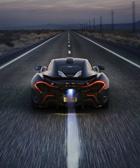
Review on Panasonic DP UB9000 Blu Ray Blu Ray Dynastar by Calvin Reynolds

blow. und miss
This device is similar to most Blu-ray players. It's a toss of the dice on how buggy it'll be, and whether it's compatible with your receiver, sound processor, or other component (more on that below if you want to read that much). I had more expensive ones and cheaper ones, and everyone played with glitches enough, hung around, and sometimes it even had to be turned off or unplugged before it could even share the drive. I didn't keep it long enough to say much about disc playback, but it took many tries before it finally connected over Wi-Fi. I used to do long runs with LAN cables but didn't want to. Time. It's quite heavy, built like a tank, presumably with separate audio, video, and power supplies. Audio connoisseurs and music lovers will realize one thing: Panasonic missed (or ignored) a major opportunity by making DVD-Audio and SACD incompatible. I love listening to CDs in this player, just like I do in the Oppo (which I've connected to optical digital lines from my 300 CD machines). Forgive my clumsy grammar. Those of us who spend a lot of money on this unit because we appreciate the care they put into the sound design, DACs and dedicated XLR stereo line outputs etc. will still make up a significant portion of their target audience. So you should have known that the lack of support for these formats would be greatly missed. One of the very good things about Panasonic is that they have a full set of analog lines for powered speakers, multiple amps, or a multi-channel amp with analog inputs. However, I already have my Oppo for it, so I didn't buy it for that aspect, just for the highly acclaimed "Hollywood Movie Processor" or whatever, and built great, and to be able to use the analog outputs later in a different setup. As for compatibility - or lack thereof - with other components, my discrepancy was with the Oppo bdp 105, which actually has inputs, allowing you to use superior audio circuitry. not only for the discs you put in, but also for other devices you send it digitally from. I've been using Sony's HDMI audio (which costs a lot less than this and will play both of the high-end disc formats mentioned above), came across Oppo and it was a good combo. I guess I won't have to spend as many miles on Oppo if I use another player as a workhorse. That's good, because if Oppo ever dies I'll have to pay a lot more for a used one than I originally paid for it. Anyway, to make a long story longer, it sent some audio to the Oppo but not to the surround speakers/amp. I've tried switching the output from PCM to Bitstream and a few other audio settings to no avail. I turned the Sony back on and something amazing happened: the surround channels were back. I expect over 1k all kinds of audio processors, DACs and receivers with HDMI inputs. It should be compatible with such devices released a few years ago, given that surround sound can be converted from the latest formats to simpler surround sound, which is still great. I was expecting breakdowns and all. this happens with all the players i had. I would DEFINITELY expect that there are surround sound settings like bass management, crossovers, large/small speaker selection, white noise generator, test tones, etc. that you use to set up your speakers/amplifiers/etc. require. which completely defeats the purpose of having all those analog outputs to reproduce very high quality sound. It's like going to a baseball game with a football team. It was hit and miss. Some great, some not so great. like going to a baseball game with a football team. It was hit and miss. Some great, some not so great. like going to a baseball game with a football team. It was hit and miss. Some great, some not so great.
- Analogue circuits for 2-channel and 7.1-channel output are mounted on special glass-epoxy boards. Along with the use of high-quality components such as audio-grade low-noise operational amplifiers and electrolytic capacitors, fully balanced signal transmission is achieved through the use of differential circuitry from the D/A converter output to the XLR output connector.
- Uncertain
New products
Comments (0)
Top products in 📹 Blu-ray Players & Recorders

📺 Enhance Your Home Theater Experience with the Sony UBP-X700 4K Ultra HD Streaming Blu-Ray Player

9 Review
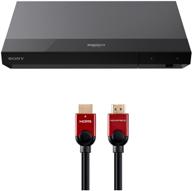
Sony UBP X700 Blu Ray Player Vision

9 Review

📀 Sony BDP-BX370 Blu-ray Disc Player with Wi-Fi and HDMI Cable for Seamless Connectivity

8 Review

📀 Toshiba BDX2000KU Blu-ray Disc Player with 1080p Resolution

8 Review
Another interesting products
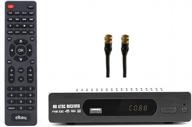
EXuby Digital Converter Box For TV With RF/Coaxial And RCA Cable For Recording And Viewing Full HD Digital Channels Free (Instant Or Scheduled Recording, 1080P HDTV, HDMI Output, 7 Day Program Guide)

12 Review
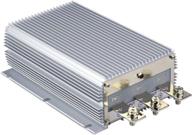
DC/DC 12V To 24V Boost Converter 40A 960W - Waterproof Voltage Regulator Module For Car Power Supply (10V-16V Input)

15 Review

Germany France Travel Power Adapter,TESSAN Schuko Plug With 2 USB Ports 2 AC Outlets, US To European Europe German French Spain Iceland Norway Russia Korea Adaptor(Type E/F)

17 Review
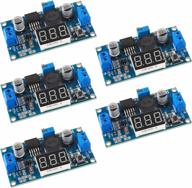
Dorhea LM2596 DC-DC Buck Converter Step-Down Regulator 4.0-40V To 1.25-37V DC 36V To 24V To 12V To 5V Volt Power Supply Module With LED Voltmeter Display Compatible With Car Motor Buck

16 Review

